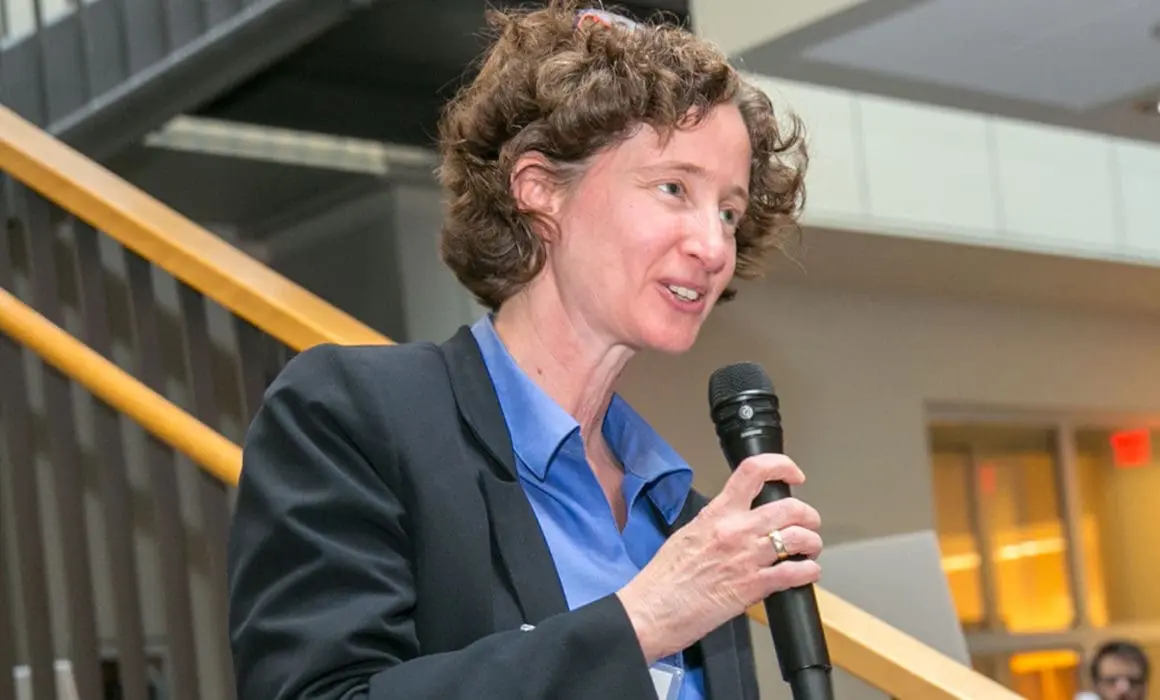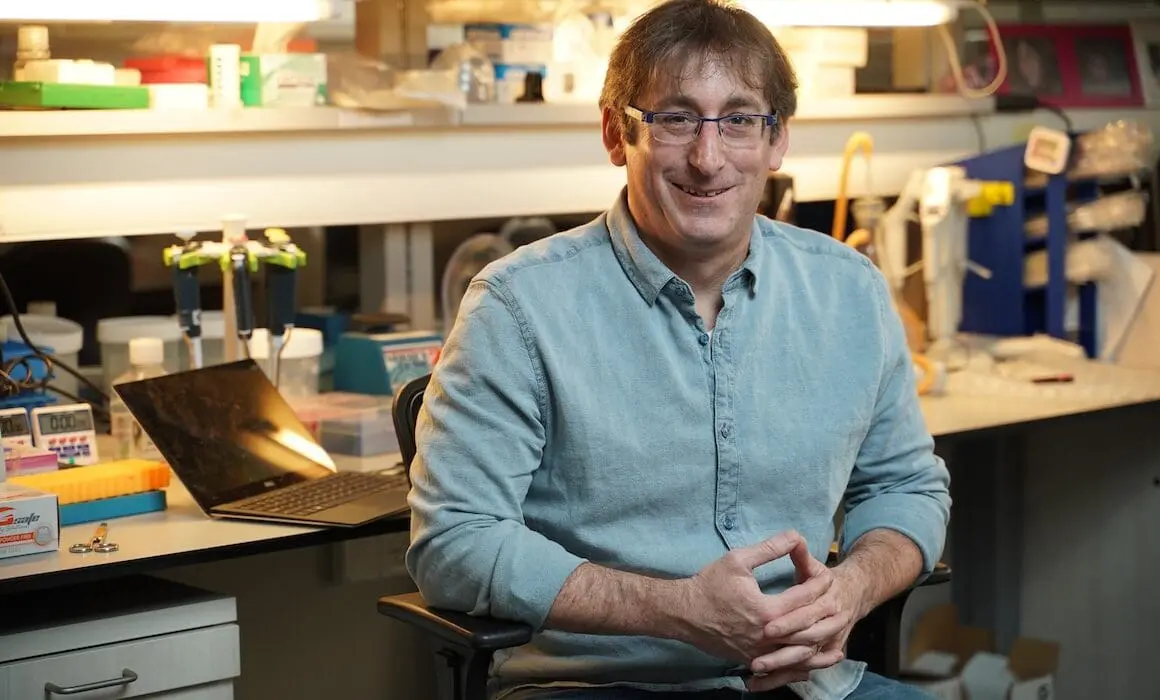Alumni Spotlight: From Haifa to Harvard with Dr. Ifat Rubin-Bejerano

Ifat Rubin-Bejerano holds a Ph.D. and a B.Sc. magna cum laude from the Technion and today serves as Director of Translational Research Programs at Harvard Medical School. She is also a member of the Massachusetts Consortium for Pathogen Readiness that is helping find and fund innovative solutions in the fight against COVID-19.
Can you share a bit about your background?
I was born and raised in Hod HaSharon, Israel. My father was an engineer, my mother was a teacher and I grew up with three sisters. Though Hod HaSharon is now very urbanized, when I was growing up it was full of orchards, and I spent countless hours climbing our guava, loquat, and clementine trees in the backyard and feasting on their fruits while sitting high up in their branches.
I loved nature and learning the names of different wild plants, and I think perhaps that was what sparked my early interest in biology. My late uncle Reuven recognized this and encouraged me early on. He was a chemist, and bought me a small microscope that I played with. In high school, I worked on a project for a university professor, and my assignment was to study where and how lichen grows. I was so devoted to the project that I would climb onto neighborhood houses’ roofs to take photos of lichen growing on the clay roof tiles. My goal was to find whether there was a positive correlation between the age of the roof and the proportion of it that was covered in lichen. As expected, there was. At that age, that was an exciting finding. This was my first introduction to the fungi Kingdom, which later became a major focus of my scientific career.
How did you find yourself at the Technion?
I was at the end of my army service as an officer at a Navy base in Haifa when I decided to go to an Open House at the Technion. After taking a quick bus ride up the Carmel mountain, I found myself on campus watching a demonstration by biology professor Shimon Gepstein. He showed us what looked like a regular plant, but when he turned the lights off, the plant glowed. He explained that he had taken the gene that makes fireflies glow in the dark and inserted it into the plant, which made it bioluminescent. In that moment, I was so fascinated that
I decided I wanted to study genetic engineering – and I don’t think I ever really considered anything else after that.
The Biology Department at the Technion had more of a molecular biology and genetic engineering focus than anywhere else in Israel, so I decided to study there. Years later, Prof. Gepstein became the Dean of the Department, but I don’t think I ever told him about the profound impact he made on me and my trajectory.
Can you tell us about your time at the Technion?
During my undergraduate studies, my genetics professor, Yona Kassir, offered me a summer internship in her lab. I worked on a project that was very successful and actually led to a paper, and so I ended up staying for my master’s in her lab. When Yona offered me the opportunity to switch to working directly for my Ph.D., I took her up on it.
Tell us about your Ph.D. work.
My Ph.D. project was basic research using baker’s yeast to study meiosis, a kind of cell division. One may ask, who cares about baker’s yeast? The answer is that, at the level of the single cell, yeast is a very good model for human cells. So, if you study very basic processes, yeast can help you understand the genetics that could lead to diseases, for example cancer. Yeast is a model organism similar to mice, flies, or other species that are close to humans, and is easy to grow.
What made you move to Boston?
I was looking to do a postdoc and was interested in exploring how pathogens cause disease, and in particular the interaction with the immune system. At MIT’s Whitehead Institute there was a prominent professor named Gerald Fink. When I heard he would be teaching a course at Hebrew University, using a bit of Israeli chutzpah I managed to get a meeting with him and he invited me to do a postdoc in his lab at the Whitehead.
It was a big change for me and my family that included my husband Yaniv, also a Technion graduate, and my then 15-month-old son, Stav. But scientifically, I was very well prepared, thanks to my education and training at the Technion.
What was the focus of your research there?
At Gerry’s lab, I was studying the interaction between pathogenic fungi and specific cells of the immune system called neutrophils, and I discovered a unique sugar that signals fungal infection to the immune system.
One night, as I was telling my husband about recent results from my research, he thought that if there was disease for which recruiting neutrophils would be desirable, then perhaps that sugar could be used as a bait that would bring the neutrophils to the site of the disease. We started talking with many other scientists and came up with a cool idea. The sugar could be chemically linked to monoclonal antibodies for cancer, so that the antibodies find the tumors, bringing the sugars with them, which would then signal the neutrophils to attack the tumors as if they were fungi.
So, after being in Boston for about six years, my focus turned to cancer immunotherapy. I was fortunate enough to receive five different grants to support this work. Eventually, in the summer of 2011, we spun out a start-up biotech company based on this technology.
How was that transition from basic to applied research?
You always have to start with some new discovery. In my case, that was the unique sugar whose recruiting effect on neutrophils I’d discovered. I then applied that discovery to cancer immunotherapy. This is what I love about basic research: you know where you start, but you don’t know where you will end up.
Once it was clear that this concept worked, my husband and I founded ImmuneXcite. I spent the next six years with the company, and as CSO and Head of Research, led the translation of this basic academic science into a commercial platform technology. I also led the company’s intellectual property strategy – while being heavily involved in developing two key partnerships with pharma and fundraising over $20M.
What was the business? What were you producing there exactly?
We made cancer immunotherapies, specifically for breast and colorectal cancers. We did this by using FDA-approved antibodies for these cancers (trastuzumab and cetuximab) and chemically linking them to the sugar. So, when these antibodies find the tumor, they coat it with this sugar, and the immune system then attacks the cancer. The treatment led to complete regressions in many of the mice, and when these mice were rechallenged with new cancer cells, no tumors were able to grow, which was a good indication for a long-lasting immune response.
So fast forward to today. Are you involved in the fight against COVID-19?
As the Director of Translational Research Programs at Harvard Medical School, I am a member of the Massachusetts Consortium for Pathogen Readiness. This multi-institutional initiative, convened by Harvard Medical School, connects Chinese researchers from the Guangzhou Institute for Respiratory Diseases with Massachusetts hospitals, companies and universities including Harvard, MIT, Boston University, Tufts, the University of Massachusetts. Professor Nanshan Zhong, who was the first to discover and manage the response to SARS, is leading the Chinese side. The goal is to put aside intellectual property and financial considerations and work together to help solve this historic challenge. A Chinese company, Evergrande, set up a $115 million fund towards this effort. We sent out a request for proposals to this community and received about 450 proposals in areas of therapeutics, diagnostics, vaccines, pathogenesis, clinical management, and epidemiology. The consortium just announced $16.5 million worth of funding for 62 projects.
Based on the proposals that you’re seeing, do you see some promise?
Consulting with the Chinese scientists has been very informative since they have experienced the disease for at least two months longer than we have here. We learned much about the immune response, and there are things that are not public yet. I can’t say the specifics, but I think I can say, on a general level, that this virus is different from others in the way the immune system responds to it.
Unfortunately, I’m personally not very optimistic about the prospects of having a vaccine available soon. Other than vaccines, there is a lot of activity in therapeutics. Generally, there are two major approaches within therapeutics: one is to develop monoclonal antibodies to the virus and the other is to develop small molecule inhibitors. Multiple companies and academic researchers are trying to generate monoclonal antibodies or isolate them from the plasma of people that have recovered. I think that’s likely to work, and potentially could be used in front-line health workers and high-risk patients. As to small molecule inhibitors, they take years to develop. Because of this, there’s a lot of activity around repurposing existing antiviral drugs. For example, the drug remdesivir, which was developed for hepatitis C, has recently shown some promising results against COVID-19 and has been approved by the FDA. A separate approach is to dampen the immune response, if it goes into overdrive and creates what is called a cytokine storm, rather than target the virus. Therapies like Roche’s tocilizumab is a prime example of this type of drugs, and is currently being tested in the clinic in severely ill COVID-19 patients.
What is the take-away for scientists from this pandemic?
One of the goals of the Consortium is that we’re not just going to develop something for the short-term. We need a comprehensive, long-term approach to address these deadly viruses – no matter where they originate in the world. If we developed more therapeutics and vaccines to deal with SARS and MERS when they first emerged, we would be in much better shape today. Sometimes we’re lucky and these diseases don’t arrive on our shores, but we should always develop therapies to emerging infectious disease threats, if only to reduce the learning curve for our next pandemic situation. And we should not stop when the pandemic is gone. Some people ask why Harvard would work on therapies if it’s something that companies do. The answer is that companies in many instances stop when it’s no longer commercially feasible; whereas academics don’t have those financial pressures and can continue to work on this.
If the pandemic didn’t happen. What would you be doing today?
I run Q-FASTR, a funding mechanism at Harvard Medical School that provides pre-seed funds for professors to translate their basic research into therapies and diagnostics. We provide early investment at two levels: $50,000 for early ideas, and $250,000, for more mature projects. Another grant mechanism I’m involved with, the BTCA, provides $1 million grants throughout the Harvard ecosystem (including the affiliated hospitals) to help projects spin out as new companies or get licensed by existing biotech or pharmaceutical companies.
I work with professors to develop their basic research into viable therapeutic prototypes, come up with milestone-based plans, help them with their proposals, and then review the proposals together with an expert committee. After funding decisions are made, we provide support at the execution stage with project management and troubleshooting. We are still working to select new rounds of Q-FASTR and BTCA grants. But at the moment most of the efforts are focused on making a difference in the fight against this devastating pandemic.
More Health & Medicine stories

Ukraine Could Use Israeli Placenta-Based Emergency Treatment


